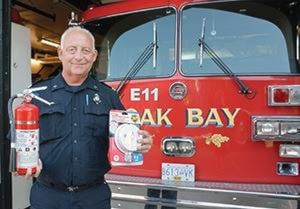Before your rainy season or spring thaw begins, take these 10 steps to protect your home from water damage.
1. Fix leaks immediately. Leaky roofs and foundation cracks allow water to get into your home, which can weaken the structure and provide a perfect habitat for mold. When you see wet spots on the ceiling or cracks in the foundation, fix them as soon as it’s safe to get up on the roof or the material is dry enough to repair. Check that roofing shingles are secure.
2. Spring for extra roof protection. When it’s time to replace your roof, spend a few hundred dollars more to install a rubber roof underlayment, a waterproof barrier that goes under the shingles and protects the roof from water intrusion.
3. Close foundation cracks with mortar and masonry caulk or hydraulic cement, which expands and fills gaps completely and costs only a few dollars. Don’t patch solely with mortar or cement, which may crack again. If water is a recurring problem, be sure to investigate other solutions for issues like wet basements.
4. Clear gutters and drains. Keep gutters and drainage systems clear to carry water away from your home. Check storm drains on your street, as leaves and debris can block them, causing water to collect.
5. Invest in a battery-powered sump pump. Sump pumps let you pump water out of your home and can be an excellent defense against flooding — unless they’re powered by electricity and the power is out. Battery-powered sump pumps are a relatively inexpensive ($150-$400) solution.
6. Catalog possessions. Using a digital camcorder or camera, create a home inventory for insurance. Inexpensive digital cameras start at about $100. Although traditional video and photographs are adequate, they can be bulky to carry and may get damaged if left in a flooded home. Digital files can be stored on a small USB drive and kept in your go bag, sent to a friend or relative for safekeeping, or stored on an online backup system like idrive.com or opendrive.com, which offer a small amount of space to store files for free or a larger data storehouse for $50-$60 per year.
7. Move expensive items to a safer location. If you have a second floor or an attic, moving furniture, photographs, and artwork to a higher level will protect your possessions in all but the most severe floods. Elevate furnaces and water pumps when they’re installed, if possible, to a height of 12 inches above the highest known flood level for your area.
8. Anchor your fuel tanks. Unanchored tanks can float, rupture, and release fuel. Once the power sources of system units like furnaces and water heaters are disabled and the units cooled, you can also wrap them in waterproof tarps to mitigate water damage.
9. Prevent sewer backup. Install (or have a plumber install) sewer or septic line check valves, which allow waste to flow only one way. Plan to spend $100 or more per valve to have a pro install them, or do it yourself for $10-$15 each to ensure sewage can’t back up into the standing water in your home. Install at a point in the pipe that’s easy to access for repair.
10. Install French drains if you live on a slope and have a persistently wet basement or soggy lawn. A French drain collects water in your yard and diverts it safely away from your house.
Floods are a common challenge that many home owners will face at one time or another. However, by keeping your home in good repair, moving valuables out of water’s way, and creating good drainage around your home, you can stop or reduce potential flood damage.
For more information contact the Oak Bay Fire Department’s Fire Prevention Division at 250-592-9121.
Capt. Rob Kivell is the Oak Bay Fire Department’s fire prevention officer.



